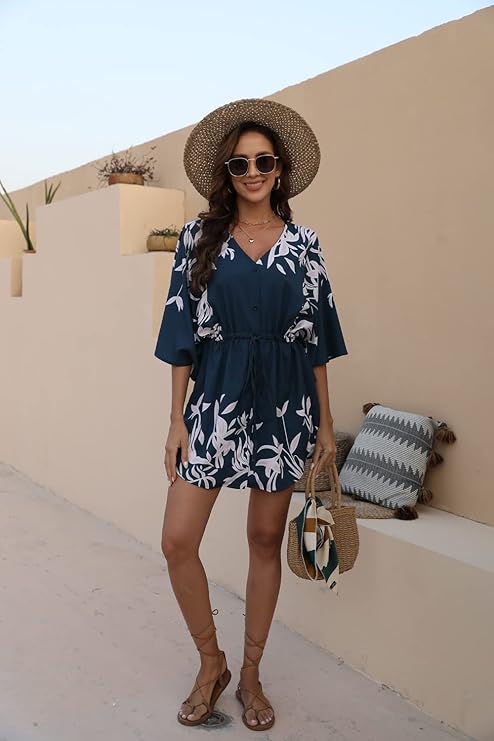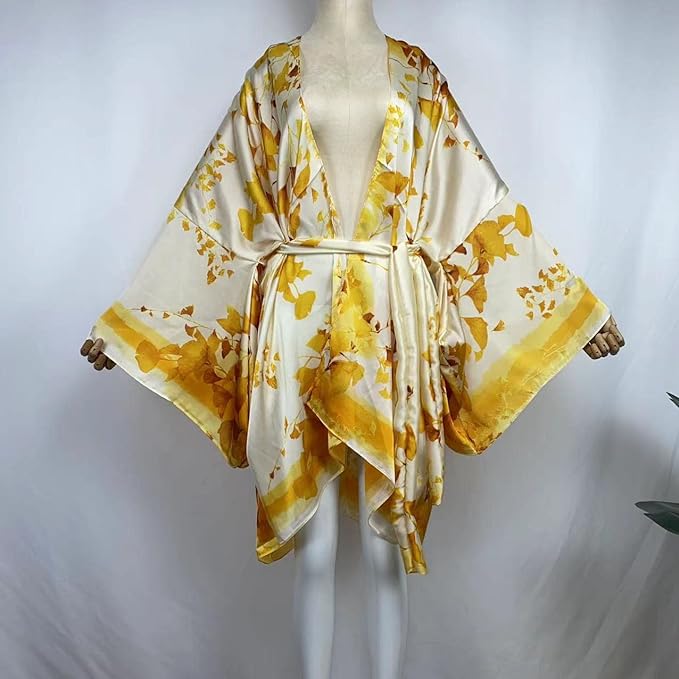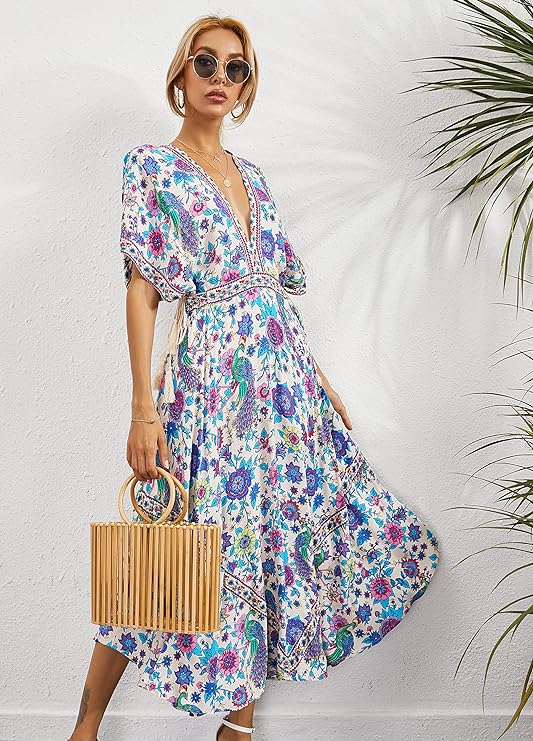Unveiling the Kimono Dress
A Rich Heritage
The kimono dress, with roots deep in Japan’s history, originally functioned as everyday attire. Crafted from silk, its allure lay in its simplicity – a straight-lined robe secured with a sash called an obi. Kimonos have grown to symbolize Japanese cultural and aesthetic ideals, showcasing honor, grace, and a connection to ancestral practices. They’ve evolved to embody special meanings, varying in color and pattern. Each robe kimono tells a story, representing occasions from the everyday to the celebratory, yet they all preserve a heritage that transcends time.
The Modern Evolution
In today’s fashion landscape, the traditional kimono has inspired a new category of clothing: the kimono dress. Designers draw upon its time-honored silhouette and aesthetics to create garments suitable for modern-day wear. Kimono dresses maintain key elements like wide sleeves and wraparound style but reinterpret them for contemporary audiences. Designers often experiment with fabrics, lengths, and motifs to blend tradition with modern relevance. In doing so, the kimono dress has found its place in diverse wardrobes, honoring its origins while meeting current fashion demands.

Kimono Craftsmanship
Creating kimono dresses honors a long-standing tradition of craftsmanship. Each piece exhibits the care and skill of its creators, often involving ancient dyeing techniques and hand-stitching patterns. The artistry behind the kimono dress sustains the practices of artisans who have dedicated their lives to perfecting their craft. In modern times, the making of kimono dresses continues to respect these methods, ensuring that each dress not only represents a cultural legacy but also supports the economies of artisans devoted to this intricate work.
The Global Stage of the Kimono Dress
The Intersection with Western Fashion
Western fashion has embraced the kimono dress, leading to a transformative journey across cultures. The garment’s blend of comfort, elegance, and distinctive style appeals to a global audience. From lightweight summer versions to elegant, formal adaptations, the kimono dress has proven versatile. It serves not just as a statement of fashion but as a bridge connecting the West with Eastern traditions. This intersection has led to a creative exchange, with designers from all over the world finding inspiration in the kimono’s structural and aesthetic beauty.
The Challenge of Cultural Sensitivity
The kimono dress, while now widespread, faces challenges regarding cultural sensitivity. As designers from different backgrounds reinterpret the garment, they walk a fine line between appreciation and appropriation. Sensitive dialogue and exchange can guide this process, ensuring that every iteration of the kimono dress respects its heritage. Educating oneself about the significance of traditional elements can lead to more meaningful and respectful design choices that honor the garment’s roots while exploring its fashion potential.

The Kimono Dress in Popular Culture
The kimono dress has transcended traditional wear to become a staple in popular culture. Celebrities and influencers often sport kimono-inspired looks, further solidifying its role as a fashionable choice. It shows up in various media and entertainment forms, influencing trends and inspiring a new demographic to explore its aesthetic. Its popularity in popular culture demonstrates the kimono dress’s adaptability and enduring appeal while raising awareness of Japan’s rich fashion heritage.
The Path Forward for the Kimono Dress
The Pursuit of Sustainability
The future of the kimono dress aligns with a growing movement toward sustainability. More designers are turning to eco-friendly materials, such as recycled fibers and organic dyes, to create their kimono-inspired pieces. These initiatives show respect for the environment and highlight the importance of ethical production in fashion. By valuing the process and the materials, the kimono dress can evolve into a symbol of sustainable fashion, blending environmental consciousness with timeless style.

The Digital Shift in Customization
Technology has revolutionized the way we experience fashion, including the kimono dress. With digital tools, enthusiasts can now design personalized kimonos online, choosing fabrics and patterns that reflect their individuality. This digital shift offers an interactive experience, allowing for a greater expression of personal style. It also broadens access to the kimono dress, once a garment reserved for certain cultural contexts, now a customizable piece within anyone’s reach.
Preserving the Essence of the Kimono Dress
Amidst innovation and change, preserving the kimono dress’s essence is crucial. Maintaining traditional elements, from the silhouette to the ceremonial dressing technique, is essential to keeping the garment’s spirit alive. Fashion houses that produce kimono dresses should strive to strike a balance, upholding the customs and meanings tied to the original kimono, while also embracing the creativity and practicality that modern wearers seek. This commitment to preservation will ensure the kimono dress remains not only an article of clothing but a living piece of culture.
In conclusion, the kimono dress stands as a unique blend of history and fashion, a garment that transcends cultural boundaries while keeping its rich heritage alive. Its evolution from a traditional Japanese outfit into a global fashion icon demonstrates the ability of traditional garments to adapt and flourish in modern settings. As the kimono dress moves into the future, it will continue to inspire with its elegance, storied past, and limitless potential for reinvention.

Preserving Cultural Integrity in Fashion
Ethical Design Practices
The integrity of the kimono dress is safeguarded when designers commit to ethical practices. This includes not only respecting the garment’s cultural significance but also ensuring fair compensation and support for the artisans who contribute their expertise. By promoting transparency in the supply chain and collaborating with craftsmen who have inherited the art of kimono-making, designers can help preserve the authenticity of the kimono dress. Ethical approaches to design thereby ensure that each piece honors the past while embracing the future.
Collaborative Cultural Exchanges
Collaboration between Japanese designers and their global counterparts can lead to respectful cultural exchanges that enrich the narrative of the kimono dress. Such partnerships allow for a sharing of skills, techniques, and cultural insights, fostering innovation that aligns with the tradition. Through collaboration, the kimono dress becomes a symbol of international unity and respect, bridging different perspectives to create something uniquely beautiful—a testament to the power of cross-cultural dialogue in fashion.

Documentary and Archival Work
Interest in the kimono dress can be preserved and enhanced through documentary and archival efforts. Historians and fashion experts can work together to catalog its evolution, highlight pivotal moments in its history, and curate exhibitions that educate and inspire. By creating accessible resources, such as online archives or interactive displays, the legacy of the kimono dress is kept alive for future generations to explore and appreciate.


